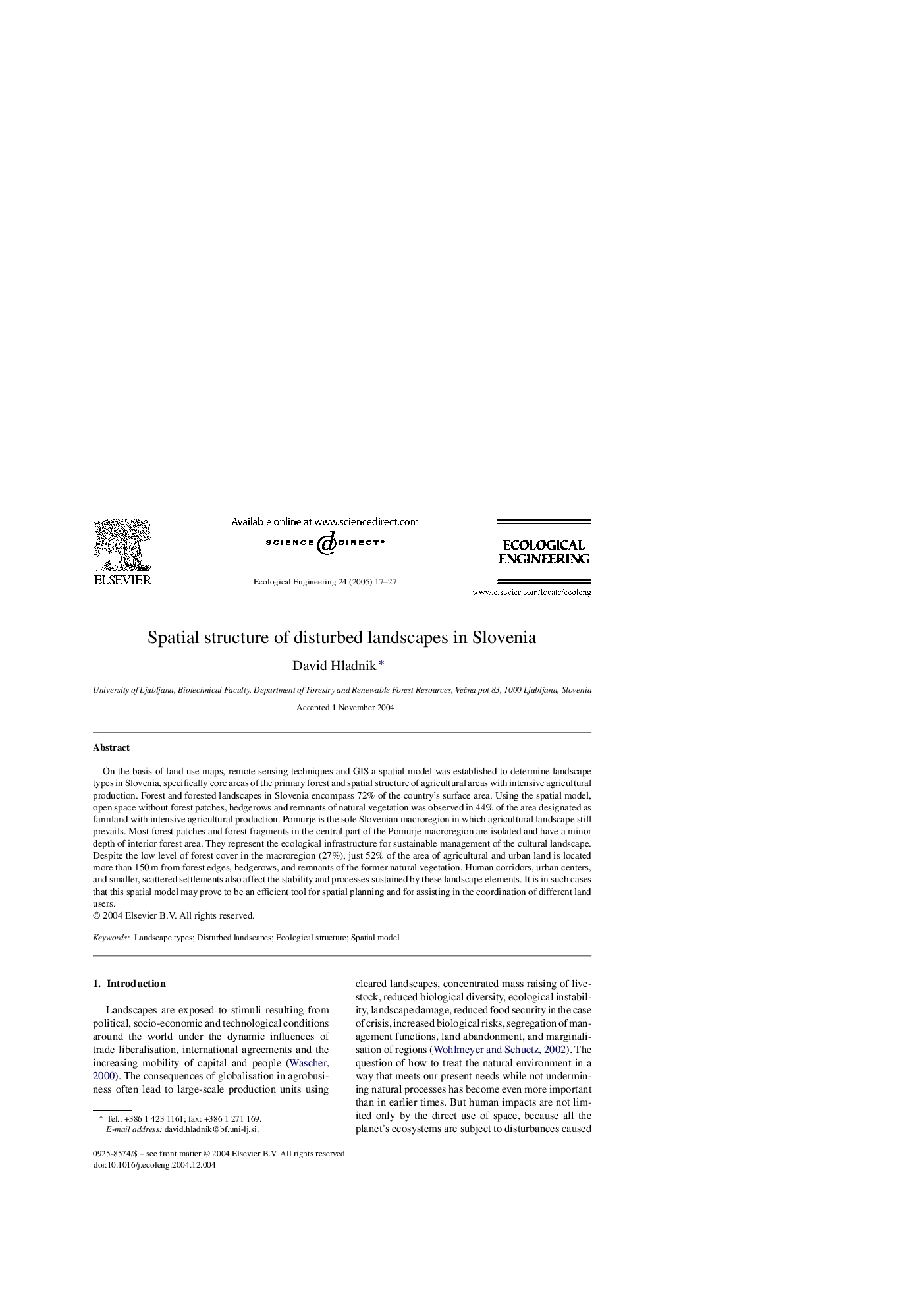| Article ID | Journal | Published Year | Pages | File Type |
|---|---|---|---|---|
| 9447409 | Ecological Engineering | 2005 | 11 Pages |
Abstract
On the basis of land use maps, remote sensing techniques and GIS a spatial model was established to determine landscape types in Slovenia, specifically core areas of the primary forest and spatial structure of agricultural areas with intensive agricultural production. Forest and forested landscapes in Slovenia encompass 72% of the country's surface area. Using the spatial model, open space without forest patches, hedgerows and remnants of natural vegetation was observed in 44% of the area designated as farmland with intensive agricultural production. Pomurje is the sole Slovenian macroregion in which agricultural landscape still prevails. Most forest patches and forest fragments in the central part of the Pomurje macroregion are isolated and have a minor depth of interior forest area. They represent the ecological infrastructure for sustainable management of the cultural landscape. Despite the low level of forest cover in the macroregion (27%), just 52% of the area of agricultural and urban land is located more than 150Â m from forest edges, hedgerows, and remnants of the former natural vegetation. Human corridors, urban centers, and smaller, scattered settlements also affect the stability and processes sustained by these landscape elements. It is in such cases that this spatial model may prove to be an efficient tool for spatial planning and for assisting in the coordination of different land users.
Keywords
Related Topics
Life Sciences
Agricultural and Biological Sciences
Ecology, Evolution, Behavior and Systematics
Authors
David Hladnik,
